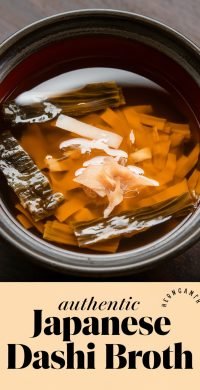The Art of Sauce and Meat Pairing

Sauces have the power to transform an ordinary meal into something extraordinary—especially when paired intentionally with the right type of meat. Whether you’re serving up a juicy steak, roasted chicken, grilled pork, or delicate fish, the right sauce doesn’t just enhance the flavor—it brings the entire dish to life.
In this guide, we’ll explore how to match sauces with proteins by understanding flavor profiles, textures, and the small but powerful details that create balance and harmony on the plate.
Why Sauce Pairing Matters
Understanding how to pair sauces with different types of meat elevates a meal by:
- Enhancing the overall flavor profile
- Adding complementary texture and richness
- Creating a more visually appealing plate
- Delivering a memorable dining experience
Let’s dive into the key components that make sauce and protein pairings successful.
What Makes a Good Pairing?

Consider These Core Sauce Characteristics:
- Sweetness: Balances spice and fat. Perfect with pork or spicy dishes.
- Acidity: Brightens flavors and cuts through richness—great for beef or fatty fish.
- Saltiness: Enhances umami and natural meat flavors.
- Spiciness: Adds depth but must be balanced to avoid overpowering the dish.
- Thickness: Thick sauces (like BBQ or gravy) cling to hearty cuts, while thinner sauces (vinaigrettes, citrus-based) suit leaner proteins.
Texture & Consistency
- Creamy sauces (e.g., hollandaise, aioli) work best with firm cuts like steak or pork.
- Light sauces (e.g., lemon butter or vinaigrette) suit chicken, fish, and steamed vegetables.
- Basting sauces (e.g., BBQ) need enough viscosity to adhere while cooking.
Flavor Profile: Match the Sauce to the Meat
Each protein has unique traits—your sauce should highlight, not mask, them.
Beef

Robust and flavorful, beef pairs well with sauces that have acidic, herbaceous, or creamy qualities.
Top Beef Sauce Pairings:
- Red Wine Reduction – Classic, bold, and rich
- Béarnaise – Creamy and tangy, perfect for steak
- Blue Cheese Sauce – Pungent and indulgent
- Chimichurri – Fresh herbs and acidity brighten grilled beef
- Hollandaise – Buttery and rich, ideal for tenderloin
Chicken

Chicken is incredibly versatile and absorbs flavor well. Choose sauces based on cooking method.
Great with:
- Barbecue Sauce – Smoky and sweet for grilled or smoked chicken
- Lemon Butter Sauce – Zesty and bright for baked or roasted chicken
- Teriyaki Sauce – Sweet-salty umami for grilled or stir-fried dishes
- Creamy Mushroom Sauce – Rich and earthy for breaded or fried chicken
- Pesto – Herbal, especially for Italian-style pasta with grilled chicken
Pork

Pork can go sweet, spicy, or tangy depending on the cut and preparation.
Pair with:
- Apple Cider BBQ Sauce – Tangy and slightly sweet for pulled pork or ribs
- Mustard Sauce – Sharp and creamy, great with pork chops or tenderloin
- Soy-Ginger Glaze – A savory umami hit for roasted or grilled pork
- Chimichurri – Bright and herby for grilled cuts
- Honey Garlic Sauce – Sweet-savory combo with a caramelized finish
Fish

Delicate in flavor, fish needs sauces that complement rather than overwhelm.
Fish Sauce Pairings:
- Salmon – Dill sauce, lemon butter, teriyaki glaze, or honey mustard
- Tuna – Wasabi mayo, citrus marinade, sesame-ginger dressing
- Cod – Tartar sauce, remoulade, or lemon-caper butter
- Halibut – Beurre blanc, pesto cream, or tomato basil relish
- Trout – Garlic butter or almondine sauce
Tip: The lighter and flakier the fish, the more delicate the sauce should be.
Don’t Forget the Vegetables

Whether as a side or centerpiece, vegetables also benefit from smart sauce pairings.
Suggestions by Preparation Method:
- Grilled Veggies – Garlic butter or BBQ sauce
- Roasted Veggies – Aioli, pesto, or herb-infused cream sauces
- Steamed Veggies – Lemon-butter or white wine sauce
- Stir-Fried Veggies – Spicy soy, sesame-ginger, or hoisin sauce
- Raw Veggies – Hummus, ranch, or other creamy dips
Balance is key—use sauces to add contrast without masking freshness.
Key Factors to Consider
1. Cooking Method
How your meat is cooked impacts which sauce fits best:
- Grilled meats love bold sauces like BBQ or chimichurri.
- Roasted dishes pair well with rich, creamy, or herbed sauces.
- Poached or steamed proteins prefer light, acidic sauces.
2. Match Intensity
Strong meats (like beef or lamb) do best with bolder sauces. Delicate proteins (like fish or chicken breast) benefit from subtle sauces.
3. Balance Bold with Mild
If your dish has intense seasoning, choose a milder sauce to balance. And vice versa—bland proteins benefit from bolder sauces.
4. Complement the Sides
Your sauce should also work with whatever’s on the plate. A smoky BBQ sauce, for example, pairs beautifully with corn, coleslaw, or baked beans. A creamy sauce might harmonize with mashed potatoes or sautéed greens.
5. Get Creative
Experiment with different flavor combinations—contrast salty with sweet, or earthy with bright herbs. Don’t be afraid to try unexpected pairings like mango salsa with pork or balsamic glaze on steak.
Aroma and Aesthetic: The Final Touches

Never underestimate how a sauce smells or looks. A dish that smells amazing instantly boosts appetite, while a visually striking plate makes the experience more enjoyable.
Tips:
- Use sauces to enhance presentation—drizzle, glaze, or pool under protein for color contrast.
- Incorporate garnishes (fresh herbs, citrus zest, chili flakes) to match and elevate aroma.
Final Thoughts
A good sauce doesn’t just sit on top of a dish—it completes it.
By understanding the texture, flavor, heat, and acidity of both your sauce and your meat, you’ll start making pairings that turn everyday meals into culinary highlights. Whether you’re hosting a dinner party or making Tuesday night chicken more exciting, a thoughtfully chosen sauce makes all the difference.
Now it’s your turn—what sauce will you try next?
Would you like help turning this into a downloadable PDF, infographic, or social media teaser?












Add comment